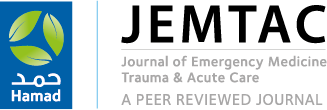-
oa Is hyponatraemia a major or a trivial issue in endurance sports?
- Source: Journal of Emergency Medicine, Trauma and Acute Care, Volume 2016, Issue 2 - International Conference in Emergency Medicine and Public Health-Qatar Proceedings, Oct 2016, 138
-
- 09 October 2016
Abstract
Exercise-associated hyponatraemia (EAH) is a potentially serious and occasionally fatal outcome in marathons and other long duration events. In the last 30 years, there have been more than 500 publications on hyponatraemia and exercise. Some studies, who point to the fatalities that have occurred, consider this as a major concern while others dismiss it as a rare and unimportant condition. This work critically assessed and summarized the main evidence on the prevalence and aetiology of the condition and on possible preventive measures. Hence, more than 400 relevant articles were identified by a search in PubMed and other secondary sources like NICE and 112 abstracts and 42 full text were reviewed. Level and strength of evidence supporting the conclusions were assessed by Strength of Recommendation Taxonomy (SORT). EAH is more frequently asymptomatic. If its frequency through finishers of an endurance event is estimated from 0 to 51%, the incidence of symptomatic EAH in marathon is estimated to less than 1% of all participants. Actual evidence correlates EAH incidence to 2 major etiologies: an overhydration by excessive fluid intake and a persistent secretion of arginine vasopressin. The prevention consists primarily of avoiding overdrinking. In this context, the key recommendation is to drink according to thirst to avoid dehydration and overhydration. To provide such prevention, besides educating athletes, education for the supporting event staff is recommended to avoid errors in fluid supplementation advices. Furthermore, the medical staff covering such events should be familiar with early recognition and diagnosis of EAH to avoid complications and improper real-time drink supplementation. In conclusion, EAH is a life threatening condition during endurance sport events. Besides a limited incidence, the increasing numbers of participants in events like marathons induce a higher rate of symptomatic EAH. It seems, according to actual evidence to be a serious concern in endurance sports.


